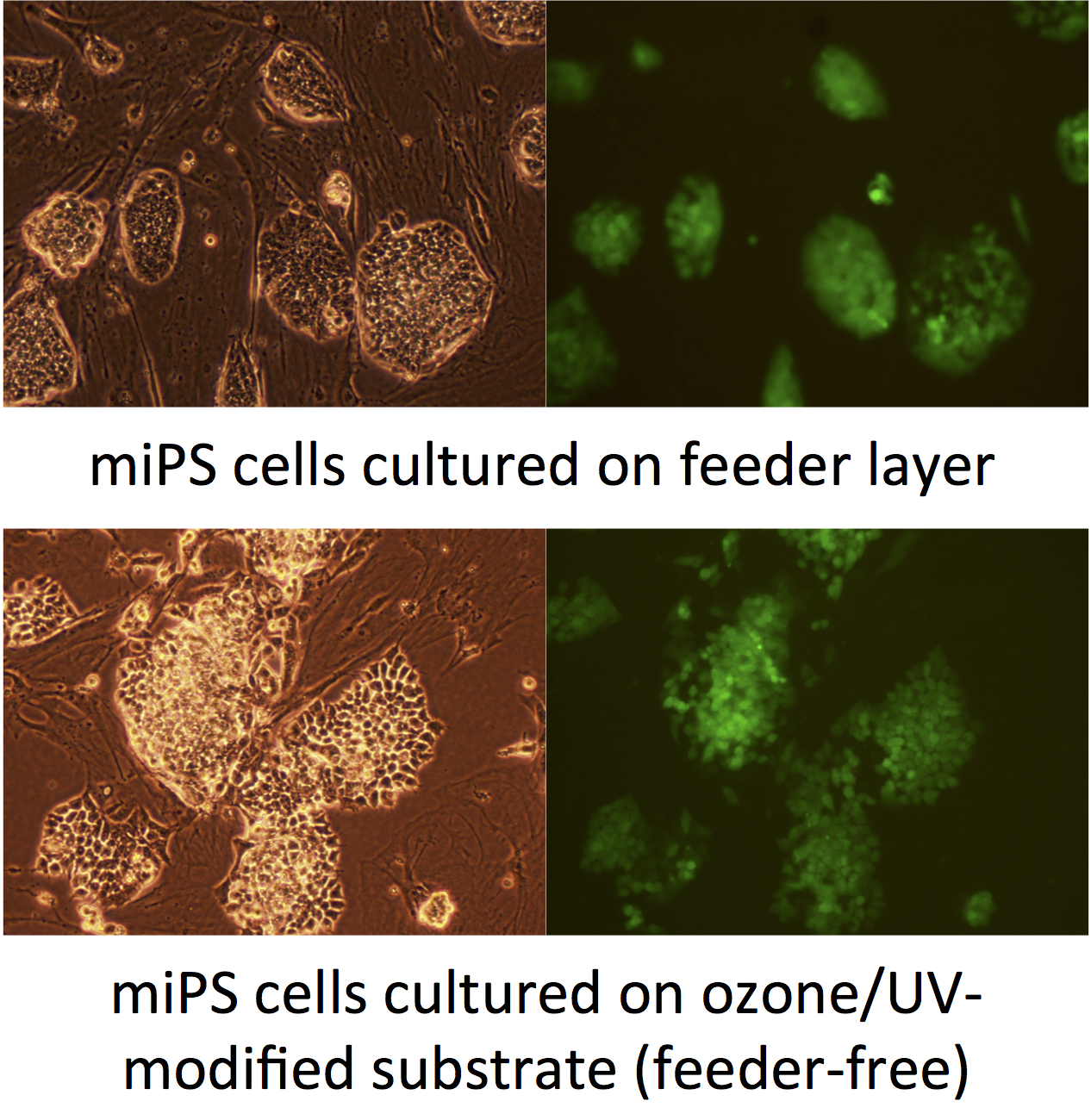Ozone/UV surface modification of cell culture substrate and effect of that on adhesion and growth of mouse iPS cells
-
1
Keio University, Faculty of Science and Technology, Japan
-
2
Keio University, Graduate School of Science and technology, Japan
-
3
Ebara Jitsugyo Co. Ltd., Japan
The culture of iPS Cells (iPSCs) requires a feeder cell layer and gelatin or other extracellular matrixes to support their pluripotency and growth. These extracellular matrixes or feeder layers are essential factors to maintain iPSCs, though those factors requires large costs and complicated procedure. Therefore, an alternative method is important for stable production and pluripotency maintenance of iPSCs.
In this study, we focused the ozone/UV surface modification of polystyrene substrates. The Ozone/UV surface modification could be an attractive alternative approach to maintain adhesion and gwoth of iPSCs because it is a simple and low cost method to modify the cell culture dishes. The purpose of this study is to evaluate the effects of various conditions of ozone/UV treatment on the physical and molecular property of surface as well as on the adhesion and growth of mouse iPSCs.
To evaluate the physical effects of ozone/UV treatment on polystyrene surface, contact angles were measured. The surface structure was also analyzed using XPS (X-ray Photoelectron Spectroscopy). Moreover, mouse iPSCs (expressing GFP by Nanog promoter) are cultured under feeder- and gelatin-free condition on the modified polystyrene dish. The initial adhesion of iPSCs and following cell growth were evaluated. Initial cell adhesion was measured at the time point of 9 hours after cell seeding. The cell number was counted after 3-day culture to evaluate the cell growth. Fluorescent images were acquired to evaluate the pluripotency by GFP expression.
As a result, the contact angle decreased according to the duration of ozone/UV radiation. This result suggests that the surface became hydrophilic by the Ozone/UV treatment. This phenomena might be derived from the oxidation and molecular modification on polystyrene surface. Furthermore, compared to untreated polystyrene, it can be stated that both initial attachment and growth of cells are improved. Moreover, the pluripotency of miPSCs cultured on ozone/UV modified substrate was maintained on feeder-free condition.
In conclusion, it was suggested that our ozone/UV surface modification could establish the feeder-free culture system.

Keywords:
Cell Adhesion,
stem cell,
Surface modification,
Cell functionality
Conference:
10th World Biomaterials Congress, Montréal, Canada, 17 May - 22 May, 2016.
Presentation Type:
Poster
Topic:
Biomaterials for cellular programming
Citation:
Kimura
Y,
Kasai
K,
Nakata
H and
Miyata
S
(2016). Ozone/UV surface modification of cell culture substrate and effect of that on adhesion and growth of mouse iPS cells.
Front. Bioeng. Biotechnol.
Conference Abstract:
10th World Biomaterials Congress.
doi: 10.3389/conf.FBIOE.2016.01.01855
Copyright:
The abstracts in this collection have not been subject to any Frontiers peer review or checks, and are not endorsed by Frontiers.
They are made available through the Frontiers publishing platform as a service to conference organizers and presenters.
The copyright in the individual abstracts is owned by the author of each abstract or his/her employer unless otherwise stated.
Each abstract, as well as the collection of abstracts, are published under a Creative Commons CC-BY 4.0 (attribution) licence (https://creativecommons.org/licenses/by/4.0/) and may thus be reproduced, translated, adapted and be the subject of derivative works provided the authors and Frontiers are attributed.
For Frontiers’ terms and conditions please see https://www.frontiersin.org/legal/terms-and-conditions.
Received:
27 Mar 2016;
Published Online:
30 Mar 2016.